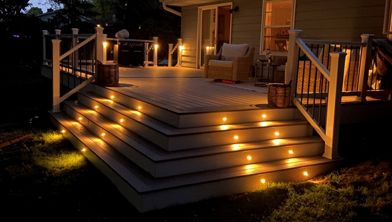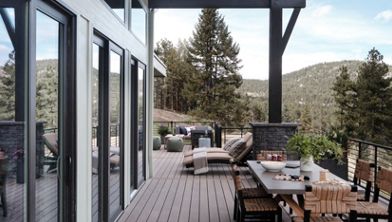Tips To Care For Composite Decking In The Winter
Some parts of the country are knee-deep in snow, others have seen it come and go and are awaiting for it to come again. Still others eagerly anticipate the first flakes to fall. With frigid winds, sheets of ice, and grimy, hard-to-melt mountains of snow, the winter months can be tough when using your deck — especially if you live in a state where subzero temperatures are the norm. While Trex decks certainly are beautiful covered in snow, it's easy to keep them clear of the white stuff. Composite decking is more resilient to harsh winter weather and can withstand ice and snow without rotting or warping, making it the best deck material for snow. Follow these simple steps to make sure your deck is properly equipped for the winter season.
How to Protect Your Deck Before Snow Arrives
First, cover any outdoor furniture you plan to leave on the deck so you can avoid the frustrating task of cleaning it once warm weather arrives. Also, sweep off leaves and other reminders of fall from your decking to avoid having to clean residue they can leave behind. While regular shovelling is important during winter, you also want to remove grime and debris from your deck before the cold weather sets in. Techniques for cleaning your deck include:
- Gently scrub the deck down with warm, soapy water
- Power-wash the deck (either yourself or hire a professional service)
How to Remove Snow and Ice From Your Composite Deck
For light dustings, you can use a simple broom in lieu of a snow shovel. If using a shovel, exercise caution, as certain materials can scuff or scratch your deck. For example, metal shovels can damage composite materials, making plastic shovels the safest choice to remove snow from Trex Transcend®, Enhance® and Select® decks. It’s also important to shovel with the direction of the board, which minimises the risk of accidental dings and dents. Calcium chloride or rock salt also can be used to melt the snow and ice from the deck surface. If you need more advice on how to remove snow from composite decking safely, the most reliable resource is the manufacturer, who can provide you with detailed cleaning and maintenance recommendations.
If you own one of the older generation Trex composite decks, such as Accents®, calcium chloride or rock salt may be used but should be rinsed off as soon as possible. Use caution not to scratch your boards when removing snow or ice with a snow shovel and never use a metal snow shovel on an older generation deck.
Explore Trex Composite Decking for Minimal Winter Upkeep
Composite decking delivers more durability and less maintenance, without sacrificing aesthetic or quality, so you can spend more time relaxing outside vs. cleaning or staining your deck. Trex composite decking is constructed from high-performance materials that are more resilient than wood planks to withstand winter weather as well as fading, scratching, or staining. You may prefer to not use your deck during the winter months, but with minimal maintenance and upkeep requirements, your deck will be ready for you to enjoy when the warm weather returns.
Discover the difference between wood and composite decking for yourself this winter.
This content was partially or fully generated by AI and has been reviewed by our team to ensure accuracy and relevance.




































